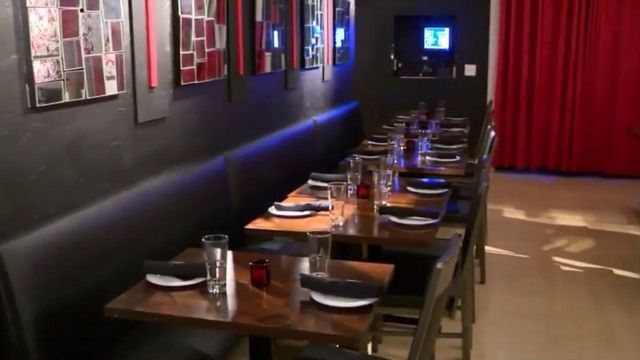Cooper lays out plan to reopen NC but extends stay-at-home order to May 8
Gov. Roy Cooper spelled out a three-part, data-driven plan Thursday to lift the restrictions of his stay-at-home order and gradually reopen businesses statewide during the ongoing coronavirus pandemic.
Posted — UpdatedBut none of those actions will occur before May 8, as Cooper tacked a week onto his order, which has been in place since March 30 and was scheduled to expire next week.
"It's clear we are flattening the [infection] curve," he said, "but our state is not ready to lift restrictions yet. We need more time to slow the spread of the virus before we can begin easing those restrictions."
For the time being, "close-contact" businesses such as salons and movie theaters will remain closed, and restaurants will continue to be limited to drive-thru, takeout or delivery service.
"I will not risk the health of our people or our hospitals, and easing these restrictions now will do that," Cooper said. "The health and safety of North Carolinians is our top priority."
Dr. Mandy Cohen, secretary of the state Department of Health and Human Services, said trends need to improve before the state can start to reopen. Some are showing progress, but not enough, she said.
The rate of growth in coronavirus infections statewide is slowing, and the number of people reporting respiratory symptoms that could be COVID-19, the illness associated with the virus, has dropped over the past two weeks, Cohen said.
The number of people in hospitals across North Carolina also is starting to level off, she said.
A "sustained leveling" of cases and hospitalizations could trigger the state plan to reopen businesses, Cohen said, noting that North Carolina has flattened the infection curve enough that the state may never see a peak in the outbreak that then decreases.
"We need to see that over a period of time to make sure we are headed in the right direction and something isn't going to sneak up on us," she said.
The state has ramped up testing for the virus, moving from an average of 2,500 a day to between 5,000 and 7,000 in recent days, she said.
"As we test more, we know we'll find more," she said, adding that the state added 388 cases since Wednesday, which is the second-highest daily total to date.
Still, Cohen said, the percentage of tests that are positive for the virus appears to have leveled off, calling it "a good early sign."
North Carolina also needs more help to trace the contacts of infected people to get ahead of any new outbreaks, Cohen said, and it also lacks enough N95 masks and gowns to protect health care providers and other front-line workers.
The stay-at-home order will remain in place in the first phase, Cooper said, but more retailers would be able to open if they practice social distancing guidelines for protecting customers and screen employees' health daily.
Other elements of the first phase include the following:
- Businesses would continue to be encouraged to have people work from home.
- Gatherings would still be capped at 10 people, but parks could reopen to provide more options for people to engage in outdoor activities and exercise.
- People would be urged to wear masks or other face coverings in public when social distancing isn't possible.
- Local emergency orders with more restrictive measures may remain in place.
At least two to three weeks later, if downward trends in viral activity continue, Cooper said he would lift the stay-at-home order and move the state into the second phase of reopening.
Restaurants, bars, fitness centers, personal care services and other businesses could then reopen if they follow safety protocols, including possibly limiting the number of customers so that social distancing can be accomplished.
Other elements of the second phase include the following:
- Vulnerable populations, such as the elderly and people with weakened immune systems will be encouraged to continue staying at home.
- The number of people allowed at gatherings will increase, but no limit was set.
- Houses of worship and entertainment venues can hold events at reduced capacity.
- Public playgrounds can reopen.
After another four to six weeks, at least, Cooper said the state could move into the final phase.
Stay-at-home restrictions would be eased for vulnerable populations, but they would still be encouraged to practice social distancing and minimize their exposure to settings where distancing isn’t possible.
The number of people allowed at gatherings and inside restaurants, bars, other businesses, houses of worship and entertainment venues would be further increased.
Strict rules will remain in place for residents, staff and visitors to nursing homes and other long-term care facilities throughout all three phases.
If data shows a resurgence in coronavirus cases at any time during the process, Cooper said, the state might need to step back to an earlier phase.
"We know we won't go back to the way we lived in January or February any time soon," he said. "But if we keep protecting ourselves and go back to work and play carefully, we can rebuild the damage that the virus has done to our state."
• Credits
Copyright 2024 by Capitol Broadcasting Company. All rights reserved. This material may not be published, broadcast, rewritten or redistributed.






